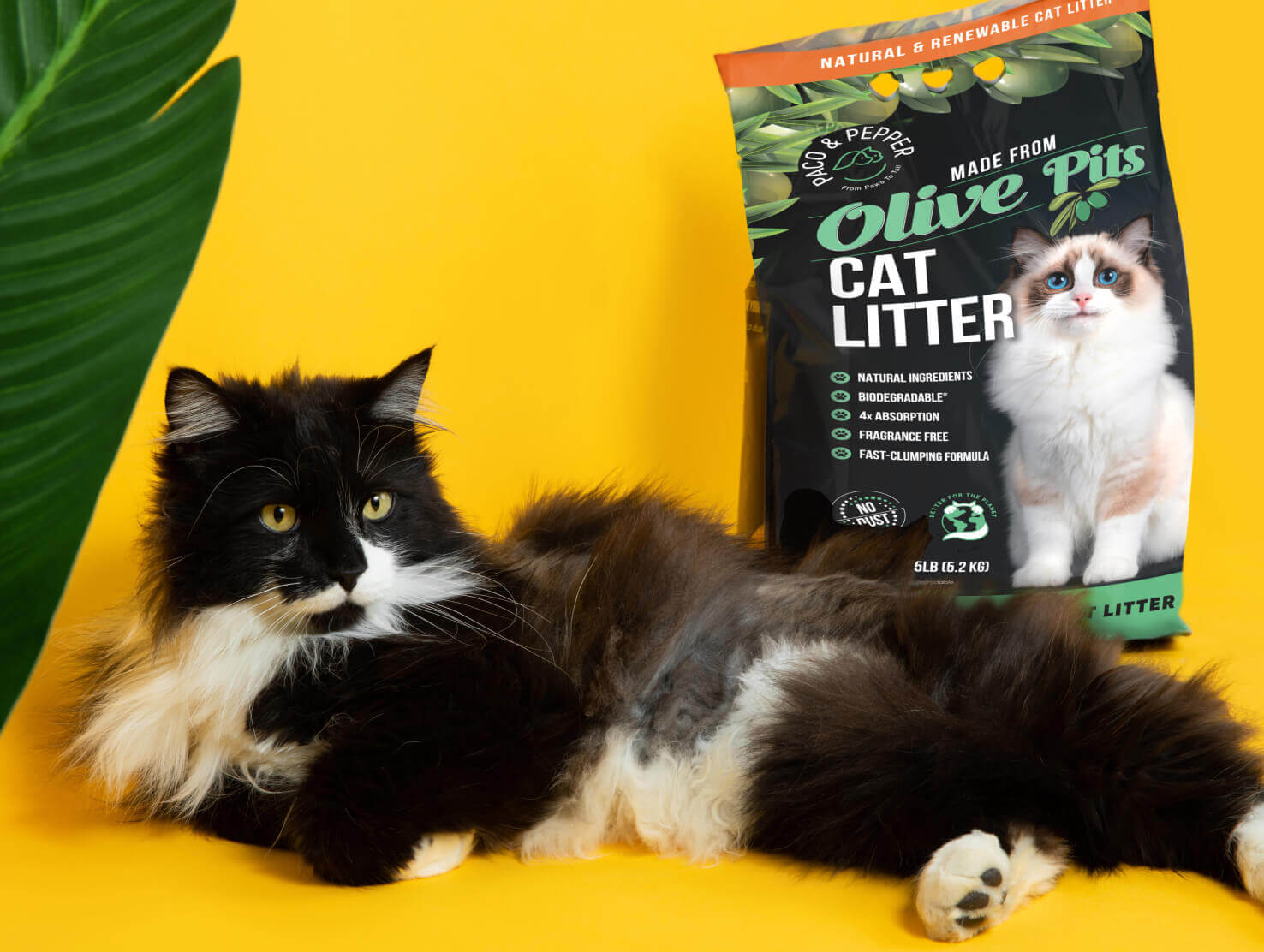What is cat litter made of

Cat owners are well aware that communication with their favorite pets can be not only pleasant but also demanding. Today, pet stores offer a wide range of goods designed to care for our fluffy pets. Among these products are various types of litters for cat toilets. So, how do you choose the most suitable product from various available options? Which litter is safe, and which can be harmful? Let's get acquainted with this issue more closely.
What is cat litter made out of
There are two main types of litters for cat toilets: absorbing and clumping. Absorbing litters effectively hold moisture without changing their structure due to their composition. The frequency of the tray change depends on the thickness of the litter layer, its quality, and the degree of humidity. To prevent the appearance of unpleasant odors, it is recommended to change the absorbent litter at least twice a week. When exposed to moisture, clumping litters form dense lumps that we can easily remove with a scoop. The cost of a clumping litter can be higher than that of an absorption litter. Now, let's find out what different types of litters for cat toilets are made of.
What is cat litter made up of: Silica Gel
The silica gel litter consists of porous granules based on silica gel, which is made of carefully dried polymer silica gel and has a composition similar to sand. Its outstanding absorbent properties are because the granules of this gel litter have a porous structure. It has the ability to absorb a volume of liquid ten times higher than its weight, leaving the surface dry and delaying unpleasant odors inside the granules.
However, this litter can cause specific health problems, especially if the cat swallows its, which can lead to stomach disorders. Therefore, cats prone to this behavior are recommended to avoid this type of litter. Moreover, under no circumstances, these granules are to be flushed down the toilet, and the litter must be mixed every day since saturated granules can lead to a puddle in a tray that repels cats from using it.
What is fresh step cat litter made of: Wood litter
Wood cat litter is a more budget option. It is made of wood chips, providing natural and environmentally friendly qualities. This litter effectively absorbs moisture, restrains smells, and quickly disperses. However, its disadvantages include a significant expansion of granules when absorbing moisture, which leads to the rapid pollution of the tray. In addition, you will often have to change the litter because the granules, after absorption, turn into wet sawdust, which can stick to the pet's paws and spread around the house, creating an additional mess.
What is clay cat litter made of: Mineral litter
Mineral cat litter also has excellent absorbent properties and has an affordable price. However, it is dusty, causes irritation of the respiratory system, and makes it unsuitable for owners and pets with bronchial diseases, such as asthma, and allergies. Due to its structure, it can stick to animals' paws and spread around the house, creating a mess. In addition, it is pretty heavy, which makes transportation more expensive and less environmentally friendly since it requires more fuel consumption.
What is natural cat litter made of: Plant-based litter
Litters of plant origin are considered the most environmentally friendly and safe for the environment. They are produced from various plant materials, such as paper, corn, wood, soy, and olive pits. The main advantages of natural litters for cat toilets are associated with their natural composition, which is considered the safest for the health of pets. Made from plant materials remaining from food production, they are completely hypoallergenic and recommended for cats with allergies or weakened health. They are safe even for tiny kittens that can eat them. Plant granules, when entering the body, do not cause harm to the mucous membranes and completely dissolve in the digestive tract under the influence of gastric acid.
Cat litters based on olive pits are also very popular. They have a high absorbent ability and effectively neutralize unpleasant odors. In addition, they are environmentally friendly and decompose in the soil in a short time. However, such litters have their drawbacks. They can attract rodents and insects and require regular replacement. Moreover, they can have a higher cost compared to synthetic alternatives. In general, the choice of litter for a cat toilet depends on the individual preferences and needs of the pet.

